Ageing and sexing details:
Overall body plumage in spring is not useful
for ageing Grasshopper Sparrows. Occasionally the presence of a
distinct molt pattern on the wing may allow an individual to be
identified as second-year, but the vast majority have to be left as
after-hatch-year.
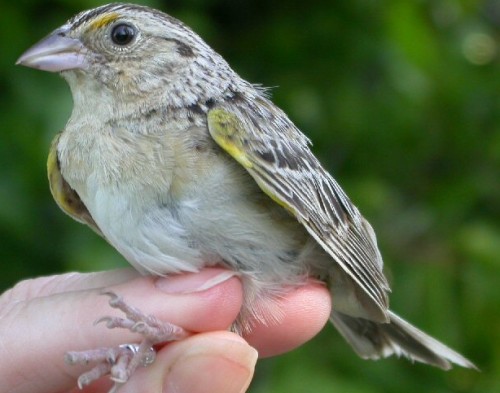
Photo by Dave Rintoul,
2004
Almost all Grasshopper Sparrows are recorded as after-hatch-year in
spring because the preformative molt is often complete, resulting in
second-year and after-second-year birds appearing identical. Only
the central secondaries (s4-s6) are known to occasionally be retained -
examine the wing to see whether these are older and more worn than the
adjacent feathers. Note the variation, however, in the three
photos below, of known second-year, third-year, and fourth-year birds
respectively. The primary coverts on the second-year bird appear
distinctly narrower and more worn than on the older birds, but this is
NOT considered a reliable feature, as these feathers would normally be
replaced in fall, regardless of age.

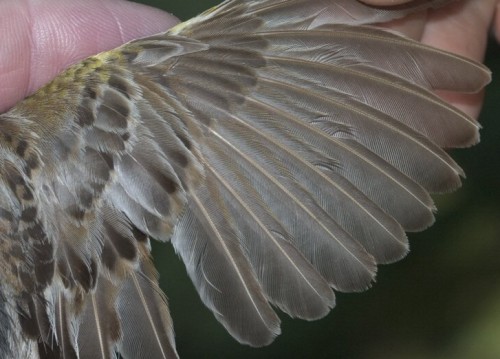
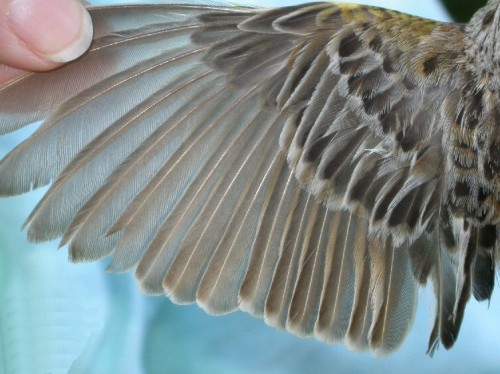
Photos by Dave Rintoul,
2004
RETURN TO AGE/SEX
OVERVIEW
RETURN TO AGE/SEX
OVERVIEW
Grasshopper Sparrows lacking streaking on
the upper breast may either be AHY, or else HY birds that have already
completed their molt. As such, an individuals with a plain breast
offers no obvious clues to age, though in some cases the wing may help.
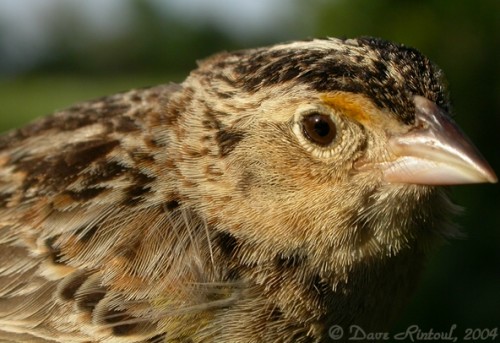
Photo by Dave Rintoul,
2004
If there is no contrast in wear among the
secondaries, age is considered unknown, as many HY birds undergo a
complete preformative molt and are thereafter indistinguishable from AHY
birds.
RETURN TO AGE/SEX
OVERVIEW
Some HY Grasshopper Sparrows are readily
aged by the retention of juvenile streaking on the breast, but the
absence of such streaking does not mean it is an AHY bird, as HY birds
acquire a plain breast during their preformative molt.
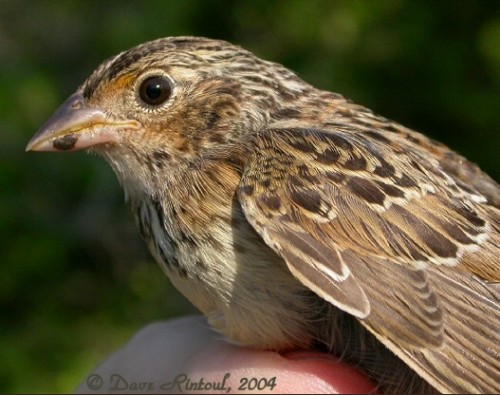
Photo by Dave Rintoul, 2004
Some HY birds retain up to three central secondaries
(among s4-s6) after their preformative molt, and the contrast between
these and the adjacent fresher replaced secondaries is indicative of HY.
However, the vast majority of HY individuals are believed to replace all
secondaries during their preformative molt, and for those, there is no
way to tell them apart from AHY birds by plumage.
RETURN TO AGE/SEX
OVERVIEW
Juvenile Grasshopper Sparrows are marked
with fine but distinct streaking on the upper breast.
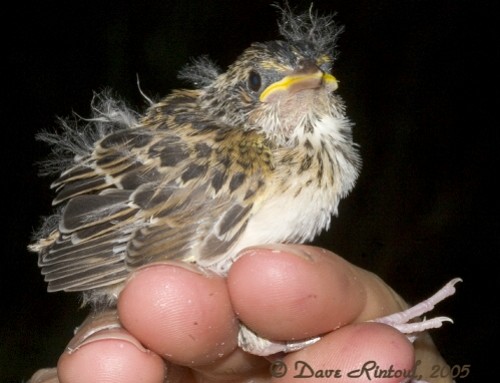
Photo by Dave Rintoul, 2005
As juveniles, the wing provides few useful identification cues for this
species. Note, however, the narrow median crown stripe, which is
useful in distinguishing this species from other sparrows.
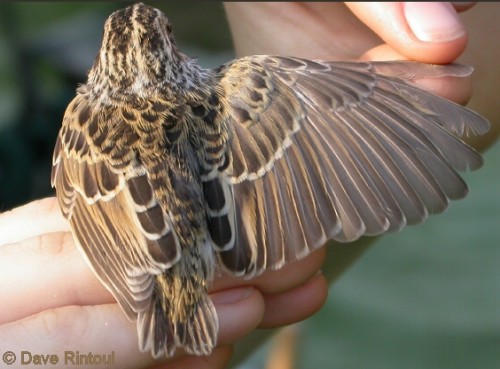
Photo by Dave Rintoul, 2005
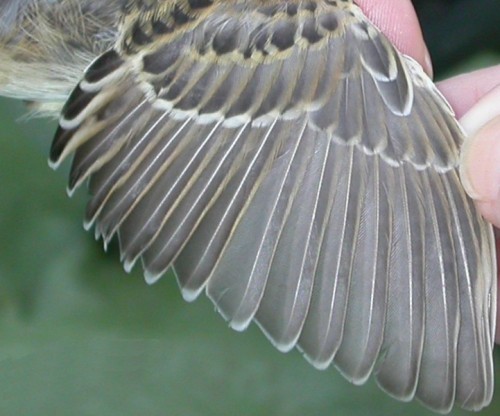
RETURN TO AGE/SEX
OVERVIEW